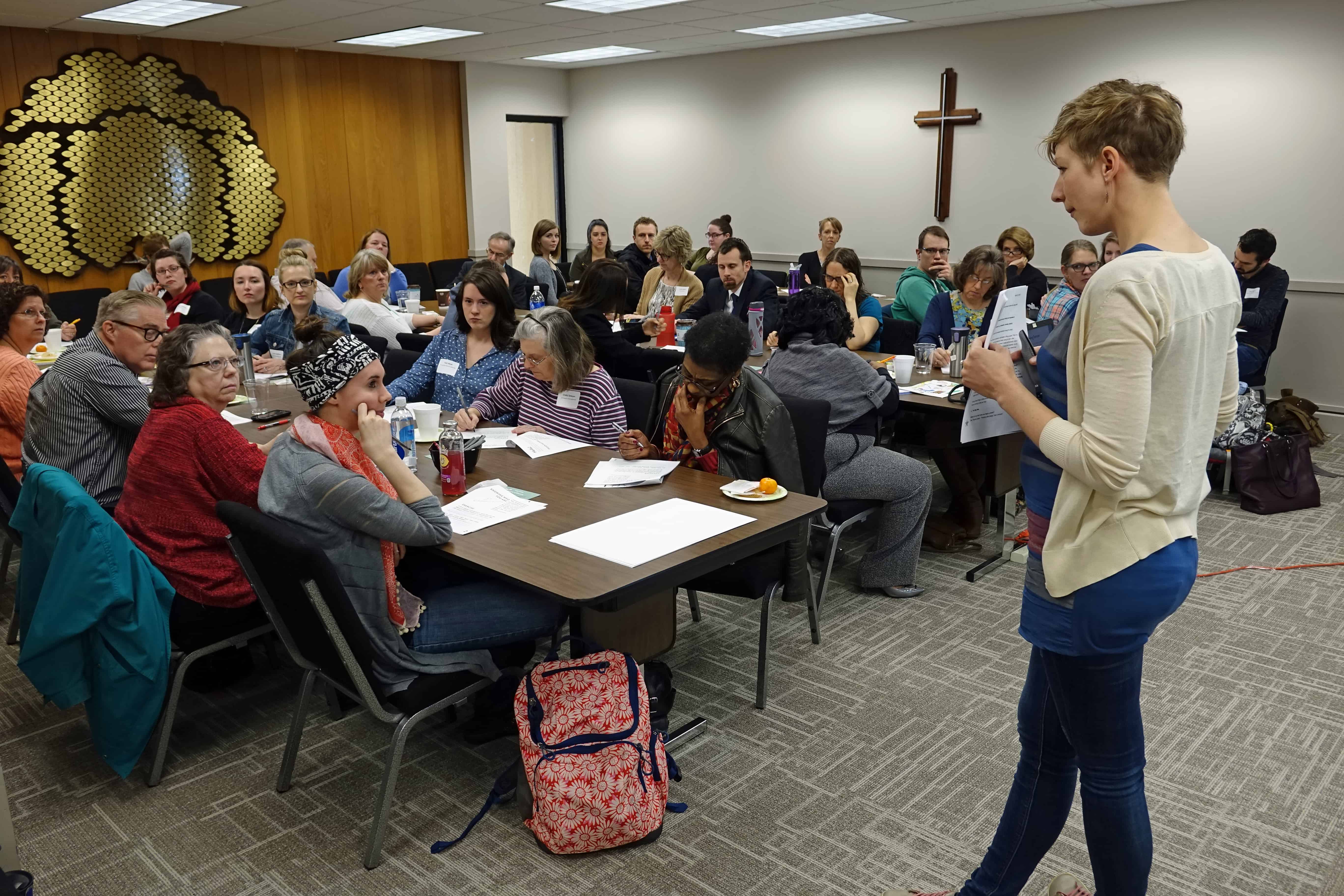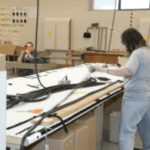Design for Non-Designers
 “In smaller ministries, you have to wear many hats,” said Candace Oyloe, Communications Manager at Outpost Ministries.
“In smaller ministries, you have to wear many hats,” said Candace Oyloe, Communications Manager at Outpost Ministries.
One of those many hats worn by nonprofit employees is often the work of designing programs, graphics, and marketing materials for their organization, without receiving the proper graphic design training.
“Being a communications manager is my job and I like it, but graphic design isn’t my field of expertise,” said Oyloe.
On April 19, Transform Minnesota offered a Ministry Equip training called “Design for Non-Designers” for people like Oyloe, who have never been trained on the basics of design. Jordan Sundberg, graphic designer and owner of Tin Cup Design in Duluth, MN shared her expertise on how new designers can get started generating ideas and the importance of creating a concept.
The Big Idea of a Concept 
“A concept is how we plan to solve the design problem. How we reach the right people, convey the right message and evoke the right feeing, while being true to who you are as an organization,” said Sundberg. “Using a concept is a recipe for effective design.”
First things first, she says, start with clarifying your organizations brand.
“Branding is more than a logo. It’s the relationships you have, it’s your priorities, your values; it’s why you do what you do. All of that is going to drive and feed how you design,” said Sundberg.
Sundberg encourages designers to take a step back and think about these 4 elements before you jump into designing anything.
Elements of Design
[pullquote]Branding is more than a logo. It’s the relationships you have, your priorities, your values, why you do what you do…[/pullquote]- Audience
Ask yourself: Who is my audience? What do they care about? Age? Gender? Where do they live?
“Who we are making our designs for matters a lot, it is not for us, we are making things for other people, and we want to reach those people,” said Sundberg.
- Message
Ask yourself: What is the message I want to get boiled down? Dig into the take-away message.
“Sometimes we think the message is, ‘I want people to show up to the fundraiser, or I need a volunteer.’ But truly the message is, ‘I want folks to grow hospitable hearts for a certain group/population. I want people to give their resources and feel the joy of helping this group/population. That’s what the fundraiser really is. That’s what you really want a volunteer to feel. That’s the deeper message,” said Sundberg.
- Feeling

Ask yourself: What do I want people to feel?
“When we look at anything that is designed, within seconds we have an emotional response. It could be shock, fear, joy, excitement: aim to connect your audience to the right feeling,” said Sundberg.
- Brand
Ask yourself: Does my idea express our organization well? Does it fit who we are?
Use an established color scheme, font, and a consistent presentation of your logo.
“There is something so recognizable about fonts. If you are consistently using the same fonts, people start seeing who you are without having to see your logo. It also saves you time if you use the same body font all the time,” said Sundberg.
[pullquote]If you are consistently using the same fonts, people start seeing who you are without having to see your logo…[/pullquote]She also emphasized the importance of consistency and guideline even within your creative endeavors.
“Colors bring about emotions, so make sure the feel of your colors go along with your organizations’ values and vision,” said Sundberg. “Create your own style and system when using logos, fonts, and colors, and keep it consistent.”
The Powerful Influence of Design 
“Good design can attract us and draw us and compel us to do things. Bad design can distract us and get in the way of something that’s really quality,” said Sundberg.
“The designs you send out to the world must reflect the vision and the values of the cause you are a part of.”
For Candance Oyloe, the “Design for Non-Designers” training offered good information, and was applicable for her even without having a background in design.
“As our society becomes more visually bombarded, this design training was really helpful. Some of the basic things I learned here will be very helpful at more effectively communicating our Outpost Ministries’ message,” said Oyloe.
For more information on Tin Cup Design.


